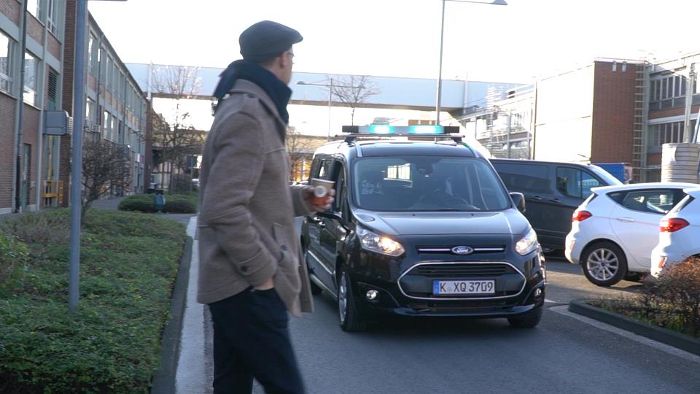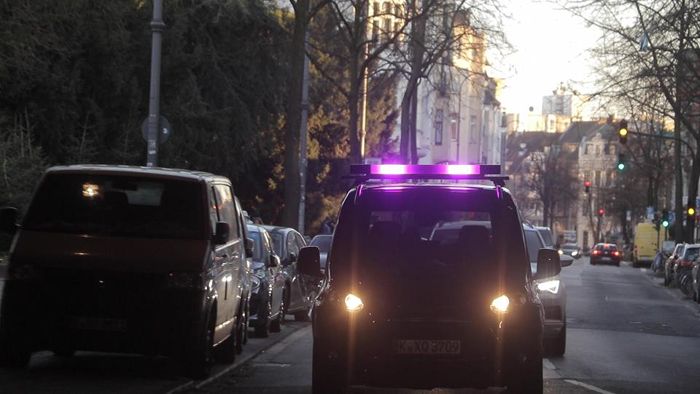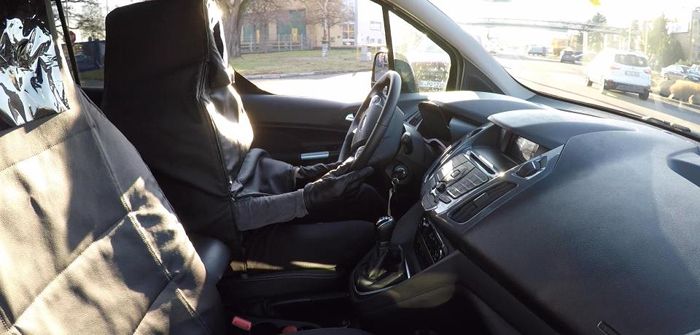In addition to its research program in the USA, Ford of Europe’s engineers have been testing whether colored lights displayed above the windshield could be a solution for bridging the ‘communication gap’ between autonomous vehicles (AVs) and humans.
Hand gestures, head nods and thumbs-up signals all help to ensure drivers, pedestrians and cyclists know what each other is doing, but with no human driver present, self‑driving vehicles will need a method to communicate with those around them.
 Ford has been testing one approach that uses lights to indicate what the vehicle is doing and what it will do next as part of research into a communication interface that will help AVs seamlessly integrate with other road users.
Ford has been testing one approach that uses lights to indicate what the vehicle is doing and what it will do next as part of research into a communication interface that will help AVs seamlessly integrate with other road users.
To ensure testing was as realistic and natural as possible, the company created the ‘Human Car Seat’ installed inside a Transit Connect van. Designed to look like an AV, with the driver hidden in the seat, observers could more effectively gauge responses to a roof-mounted light bar that flashed white, purple and turquoise to indicate when the van was driving, about to pull forwards, and giving way.
The latest testing, which complements research already carried out in the USA, was conducted together with Chemnitz University of Technology in Germany. Researchers expanded the tests to check the effectiveness of two other colors, in addition to white; a rooftop location, when the US tests had the lights placed on the top part of the windshield; and situations with further distance, showing the lights up to 1,640ft (500m) away.
In separate tests conducted by Ford together with the automotive lighting and electronics specialist HELLA, researchers tested further locations for the lights, such as on the grille and headlamps, though no clear preference emerged.
The tests concluded that 60% of 173 people surveyed after encountering the Transit test vehicle thought it was an AV. Together with the observed reactions of a further 1,600 people, turquoise was the preferred color, as it was more noticeable than white and less easily confused with red than purple.
 There was also a high level of acceptance and trust in the signals, providing a basis from which researchers can further develop the visual language. The company is collaborating with several industry organizations and is calling on other automotive and technology companies to help create the required standard for human/AV interaction.
There was also a high level of acceptance and trust in the signals, providing a basis from which researchers can further develop the visual language. The company is collaborating with several industry organizations and is calling on other automotive and technology companies to help create the required standard for human/AV interaction.
“Fundamentally, people need to trust autonomous vehicles and developing one universal visual means of communication is a key to that,” explained Thorsten Warwel, Ford of Europe’s core lighting manager.
“Turning someone into a ‘Human Car Seat’ was one of those ideas when there was a bit of a pause, and then the realization that this was absolutely the best and most effective way of finding out what we needed to know.”
Dr Matthias Beggiato, from the Department of Psychology at TU Chemnitz, commented, “Making eye contact is important, but our study showed that first and foremost road users look to see what a vehicle is doing. The next step is to look at how we can ensure the light signals are made clearer and more intuitive.”





